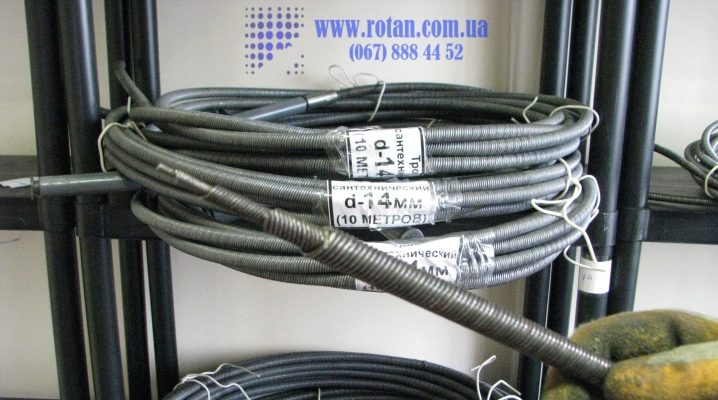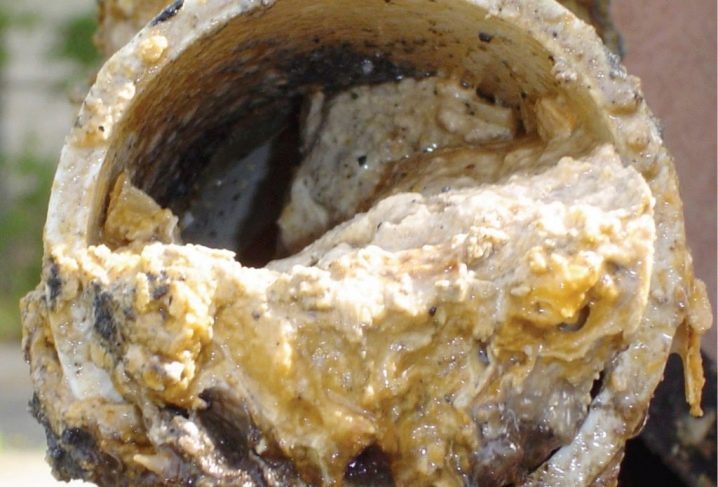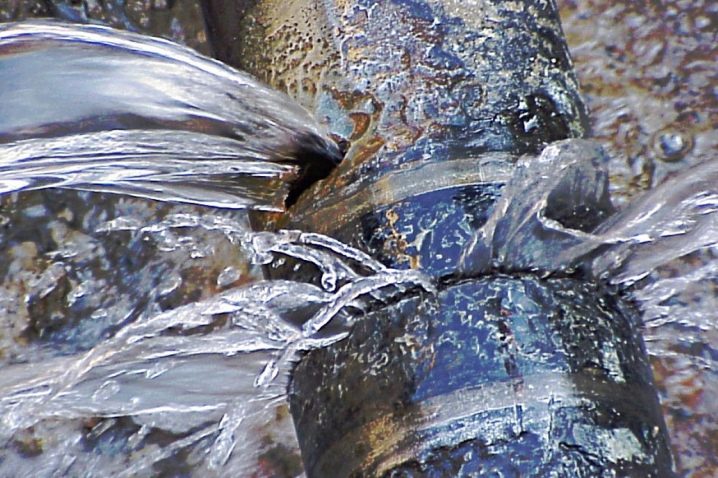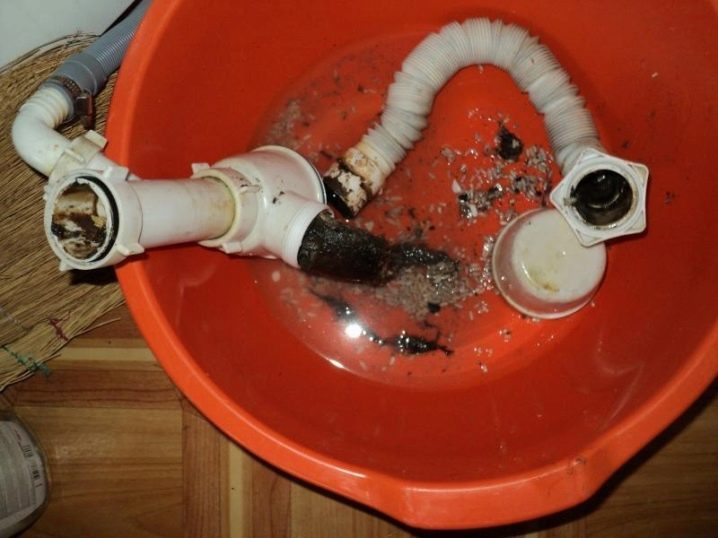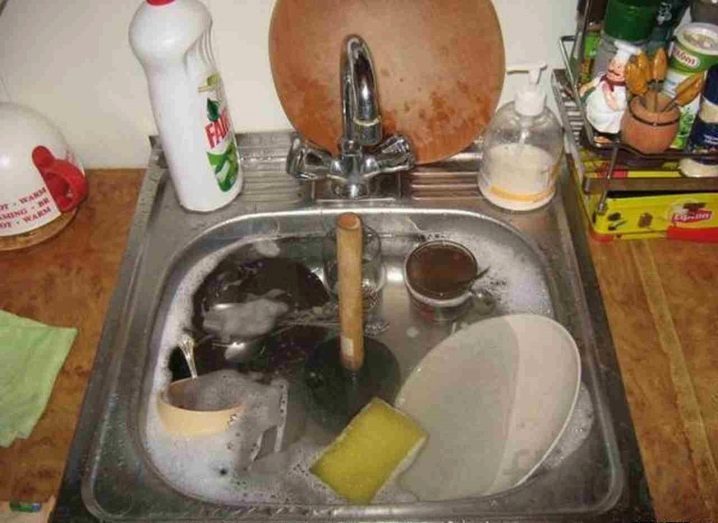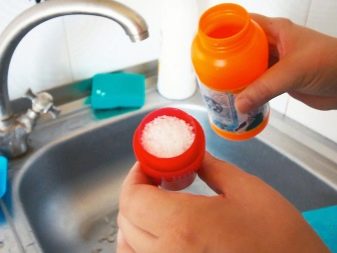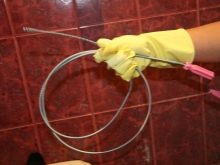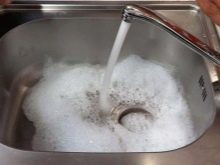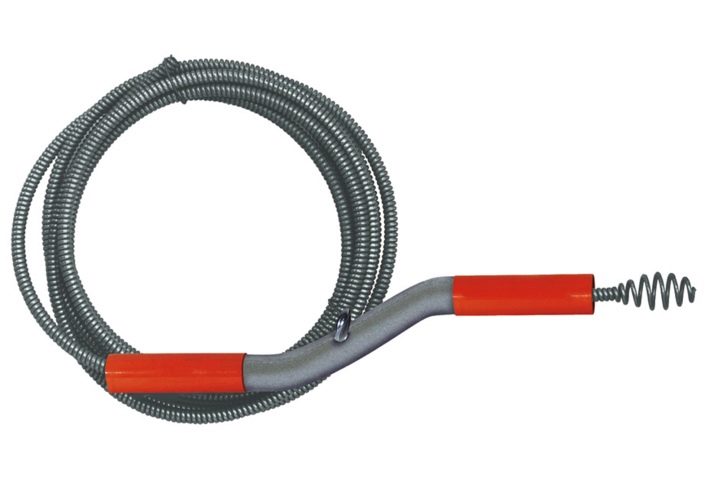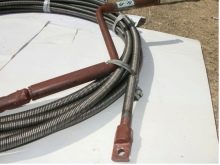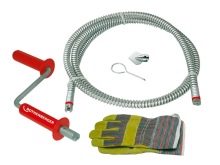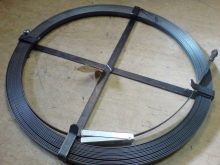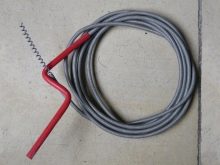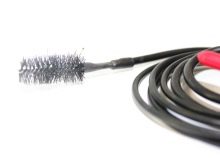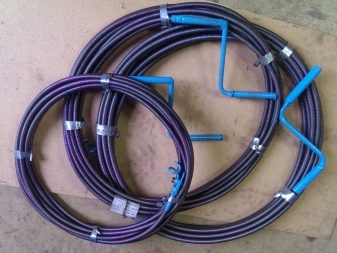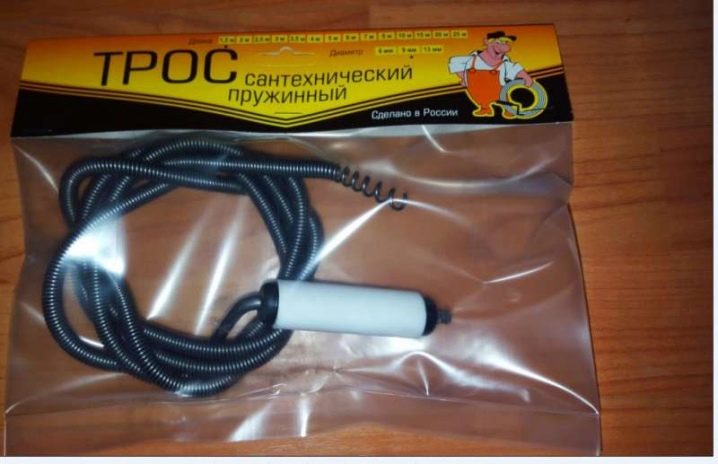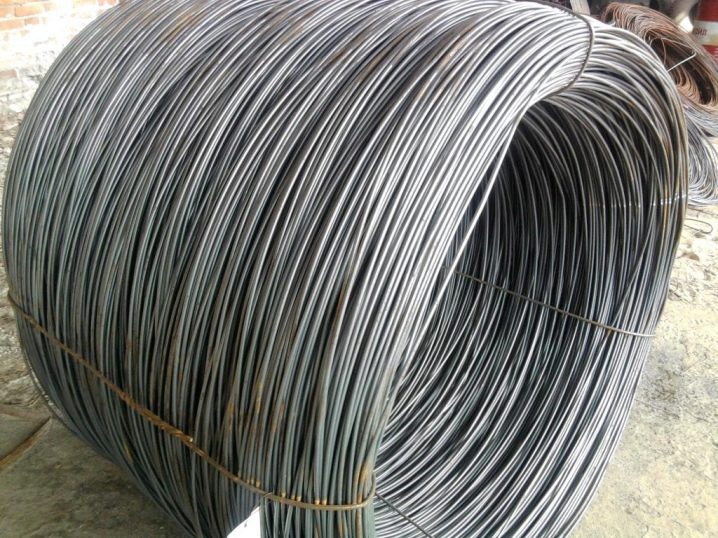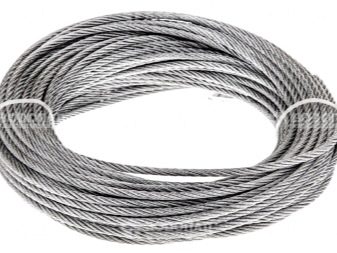What are the cables for cleaning sewer pipes?
The problem of blockages occurs in almost all sewer systems. The reasons for their formation can be very different. Modern chemicals are not always able to cope with this situation, so there is a need to use special devices in the form of cables. To achieve the highest quality results, you need to know what kind of cables are used to clean sewer pipes, and for what purposes they are intended.
Causes and types of blockages
There are three main types of blockages, such as:
- mechanical;
- technological;
- operational.
Mechanical blockage occurs due to the ingress of solid objects into the sewer pipes or toilet.which impede the full flow of waste into the sewer.In the sewer system, a plug is formed, to neutralize which requires the use of special devices in the form of cables.
Technological blockage may occur due to depreciation of pipes or violation of the connection scheme of the constituent sections of the pipeline. In this case, a complete replacement of the pipes and their preliminary cleaning is required.
Operational blockage appears when daily use of sewage due to fat deposits on the walls of pipes, as well as ingress into the system of large food particles. To eliminate such a situation can be used as a special chemical tool, and plunger or cable.
The first sign of a blockage is the obstruction of water in the sink, bathroom or toilet. In addition, an unpleasant odor can be generated from sewer pipes. The reasons for such traffic jams are both non-compliance with the everyday rules of operation and improper design of the overall system with errors in creating the angle of the pipes, as well as their joints and turns.
Remedies
In the fight against blockages there are different methods, each of which has its own characteristics.Conventionally, they are divided into two types.
- Chemical. These include various products with chemical composition in the form of powders or liquids. Instructions for their use are usually indicated on the package. Such substances are mainly used in domestic conditions, where there are simple blockages.
- Mechanical. They are presented in the form of plungers and cables. A plunger in the form of a dense rubber membrane with a handle eliminates small blockages, creating a pressure difference in the system. For more serious traffic jams, special cables are provided that can be used not only in internal systems, but also in outdoor sewers.
Any pipe cleaning begins with a thorough inspection of the cable for its integrity. After that, the siphon is removed, and all components are washed well and dried.
When the sewage system is completely ready for cleaning, the working end of the cable is lowered into the pipe, and the following actions are taken:
- rotate the cable in one direction, contributing to its gradual unwinding;
- when the cable reaches a blockage, make back and forth movements, periodically taking out the product and inspecting it for the presence of debris;
- after removing the plug, thoroughly clean the pipe from the presence of deposited particles in order to achieve the maximum result;
- for the final elimination of small elements it is worth rinsing the system with hot water.
If water passes well through sewer pipes, it means that the problem of clogging is completely eliminated. At the end of this process, the cable should be well washed, dried and wrapped in paper for further storage. It is not recommended to store the device in polyethylene, as this may adversely affect the appearance of the device. Proper care will prolong the life of the product, as well as preserve its original qualities.
Types of tools and nozzles
Such a device as a cable is truly universal, because you can easily find the necessary nozzles for it, given the complexity of the blockage. The main advantage of this product is its flexibility and ability to move in sewer systems from almost any angle. All these devices are designed not only for home use, but also in the form of improved electrical mechanisms.
These tools are divided into several types.
- Rigging or rope-type cables. Used in homes and apartments. Made of galvanized steel, and in appearance resemble tightly twisted rope with crimped ends. Their length can reach 5 meters. Differ in the increased flexibility and elasticity thanks to what effectively eliminate household blockages.
- Flexible plumbing. Made in the form of a dense metal spiral, inside which is the cable itself. Its length can be up to 60 meters, which contributes to the use of the device in various fields: both in household and in industrial.
- Spring. The design includes a handle and a steel spring coil. The length can be within 25 meters. Differ in the maximum convenience and functionality in the course of application.
- Stretch. They are rightly considered professional due to the ability to eliminate the most difficult blockages that any other equipment cannot cope with. Such models are all-metal, and can also have a vinyl sheath. Mainly used in large enterprises and factories.
- Electric. They are designed for large diameter sewer pipes. They are made in the form of cables with lugs wound on a drum and equipped with a handle to which the drill is connected, with which the speed is adjusted. The electric drive method makes them as efficient as possible and contributes to the rapid cleaning of the sewage system.
- Metal tape. The kit includes a tip in the form of a quadrangular peaks and handle. The length of the device can reach 30 meters. Differs in functionality and convenience in the course of cleaning.
To eliminate the most difficult blockages, a professional cable is used, which, instead of the handle, is equipped with an electrical or mechanical unit that rotates the nozzle. Such option is actively applied both in the internal, and in the external sewerage.
In order to achieve the maximum result, punching, bottom, hook-shaped, loop-shaped and “ruff” nozzles are used. All of them are characterized by individual dimensions, which are taken into account in the process of selecting a product for a particular type of pipe.
Criterias of choice
Each cable is designed to clean sewer pipes, in which clogging has been formed.On the modern market there is a rather diverse range of these products, which are distinguished by individual parameters and purpose.
To make the right choice, it is recommended to consider their technical features.
- Diameter. Based on the parameters of sewer pipes it is necessary to make the choice of a cable. It is important that this device freely moved through the system, pushing the resulting plug.
- Length. The length of the spiral will directly determine how deep the device can sink.
- A pen. It can have an L-shaped or Z-shaped handle.
- The presence of braid. Plastic sheath protects pipes from damage in the process of removing clogging. It is especially relevant in the sewer system, which consists of modern plastic pipes.
- Material. The best option is a stainless steel cable, which is characterized by durability and resistance to adverse factors. This material perfectly retains its qualities even after repeated use, as it is characterized by increased wear resistance.
- Rigidity.The higher the level of rigidity of the product, the more convenient it is to use it during cleaning.
- Type of instrument. It is recommended to choose a cable taking into account features of its further operation.
During the acquisition of the cable is to carefully choose its cross section. In most cases, it is the correctly chosen cross-section that ensures quick and effective elimination of blockage, as well as preserving the integrity of the sewer system.
For each pipe diameter, an individual version of this device is provided:
- up to 50 mm - section no more than 10 mm;
- 50-110 mm - section within 11-15 mm;
- more than 100 mm - section from 16 mm.
It is necessary to take into account the fact that too thin a cable with a cross section of about 4 mm can tear during use, so this option can only be used to remove hair in drains. The spring cable is considered more professional. Its length starts from 25 meters and can reach 60 meters. The diameter of this specimen is 13.5 or 16 mm. This option is more functional and effective, so it has a wide range of applications.
Making of improvised means
As practice shows, it is possible to clean sewer pipes not only with a factory cable, but also with a hand-made device. To do this, it is enough to have basic materials at hand. The simplest solution is considered to be a piece of flexible wire 10 m long with a bent end, but this option is suitable only for shallow clogs. If the sewer plug is more serious, then the help of a professional cable will be required.
For the manufacture of manual cable, you must perform the following steps:
- take as a basis a metal cable of the required length;
- fluff one end, giving it the shape of a brush;
- at the second end make a ring and for greater convenience attach a handle to it;
- cover the product with an anti-corrosion compound to preserve the original qualities.
Such a cable can be used when cleaning pipes, as well as toilet bowls and bathtubs. It should be borne in mind that for each type of blockage has its own version of the product with its own individual properties and features. In order to prevent such situations, it is necessary to regularly conduct routine inspection of sewage pipes,and also to prevent food particles or other substances that may cause clogging to enter the sewer system. Such measures will help to extend the life of the pipes, as well as create the most comfortable conditions for staying in a particular room.
In this video you can look at the best way to clean the sewer pipes in a private house.
